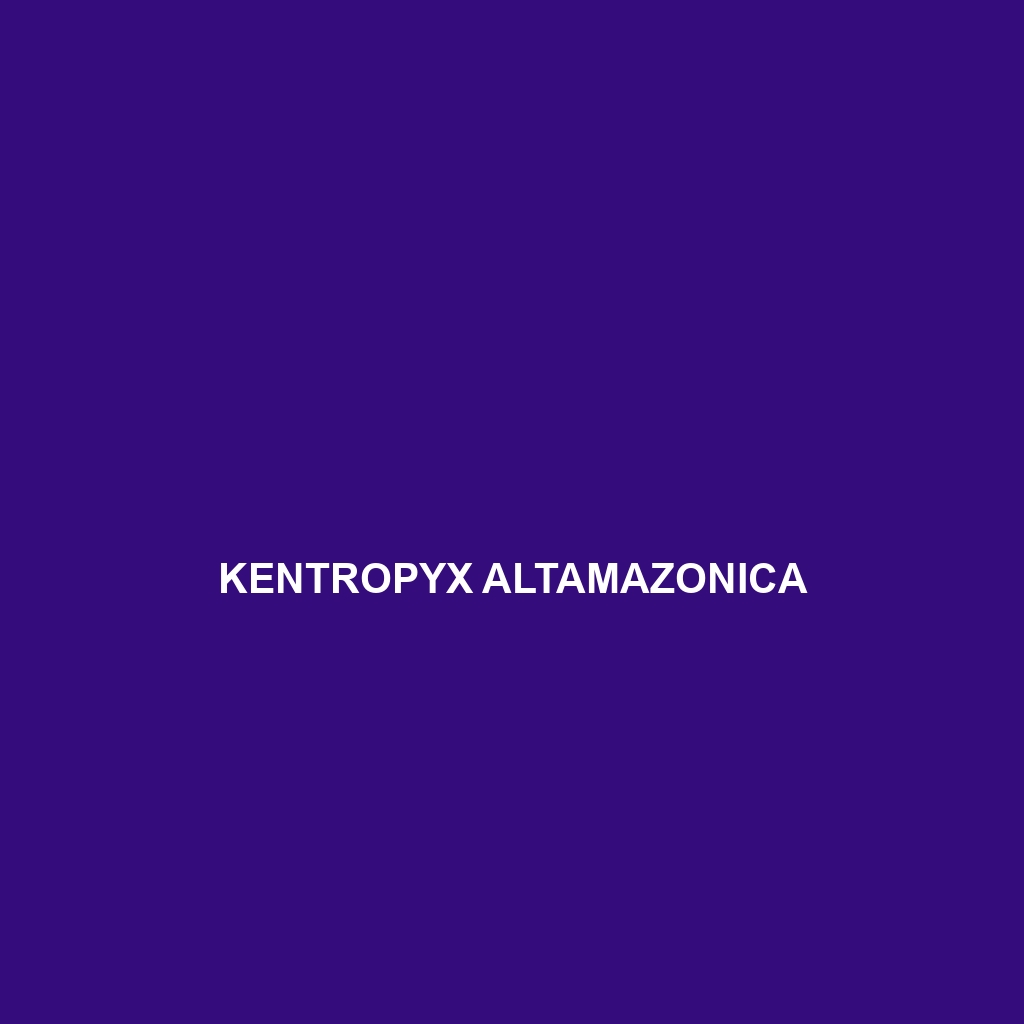Common Name
Kentropyx altamazonica
Scientific Name
Kentropyx altamazonica
Habitat
Kentropyx altamazonica, commonly known as the Amazonian teiid, primarily inhabits the lush, biodiverse environments of the Amazon rainforest. This species is predominantly found in regions characterized by warm, humid climates where temperatures consistently exceed 25°C (77°F) throughout the year.
The Amazonian teiid prefers areas close to water bodies such as rivers, streams, and flooded savannas, which provide essential resources for foraging and breeding. These habitats are typically dense, featuring a variety of vegetation including tall trees, shrubs, and understory plants that offer ample cover from predators. The combination of rich soil and high rainfall in these rainforests fosters a thriving ecosystem, making it an ideal home for Kentropyx altamazonica and numerous other species.
Physical Characteristics
Kentropyx altamazonica exhibits notable physical features that distinguish it from other lizard species. Generally, this species can reach lengths of up to 25 cm (approximately 9.8 inches), with a slender body that enables agile movement through its arboreal and terrestrial environments.
Its coloration is predominantly brown or gray, adorned with intricate patterns of lighter spots or stripes, which serve as effective camouflage against the rainforest floor and foliage. The scales are smooth and somewhat glossy, contributing to the lizard’s sleek appearance. One unique feature of Kentropyx altamazonica is its well-developed limbs and long tail, which allow it to navigate its habitat efficiently, whether climbing or burrowing.
Behavior
The behavior of Kentropyx altamazonica is a rich tapestry of social interactions and adaptive habits. These lizards are predominantly diurnal, being most active during the daytime. They are often observed basking in the sun on rocks or tree branches to regulate their body temperature.
While typically solitary, these lizards exhibit social behaviors during mating seasons, engaging in elaborate courtship rituals that involve distinct displays of color and movements aimed at impressing potential mates. Their territoriality is evident as they often mark their domains and engage in competitive behaviors with other males. Additionally, these lizards have developed a keen ability to blend into their surroundings, making them proficient at avoiding predators.
Diet
Kentropyx altamazonica is an insectivore, primarily feeding on a variety of insects, including ants, beetles, and grasshoppers. Its diet also occasionally includes small invertebrates and plant matter, reflecting an omnivorous tendency that allows it to adapt to changes in food availability.
Foraging behaviors are typically opportunistic, with these lizards actively hunting during the day. Their keen eyesight aids in locating prey, and they employ quick, darting movements to capture insects on the move. This adaptability in feeding habits is crucial for survival in the competitive and resource-rich environment of the Amazon rainforest.
Reproduction
The reproductive cycle of Kentropyx altamazonica is characterized by a seasonal pattern, aligning with the warmer months when environmental conditions are optimal for breeding. Mating typically occurs during the early part of the wet season, with males using vocalizations and specific physical displays to attract females.
After mating, females lay clutches of 4 to 10 eggs in moist, hidden locations such as leaf litter or soft soil. The eggs usually take about 60 to 90 days to incubate, after which hatchlings emerge fully formed. Parental care in Kentropyx altamazonica is minimal, with mothers offering no protection post-oviposition, relying on the habitat’s cover to ensure the survival of young lizards.
Conservation Status
Currently, Kentropyx altamazonica is classified as of “Least Concern” by the International Union for Conservation of Nature (IUCN). However, its habitat faces threats from deforestation, habitat fragmentation, and agricultural expansion, primarily driven by human encroachment and climate change. Efforts are underway to promote the conservation of the Amazon rainforest, which is vital not only for this species but for countless others that share its habitat.
Conservation initiatives include establishing protected areas and promoting sustainable land-use practices to mitigate the impact of logging and agriculture on the rainforest ecosystem.
Interesting Facts
One intriguing characteristic of Kentropyx altamazonica is its remarkable ability to alter its coloration and patterns as a form of communication and as a defensive mechanism against predators. Additionally, these lizards can shed their tails when threatened, a process known as autotomy, which helps them escape while distracting the predator.
Another fascinating aspect of their behavior is their use of vocal sounds; they communicate through diverse calls that convey aggression or mating intentions, a trait not commonly observed in all lizard species.
Role in Ecosystem
Kentropyx altamazonica plays a critical ecological role within its habitat. As a predator of insects, it helps control populations of various invertebrate species, contributing to the balance of the ecosystem. Additionally, through its foraging activities, this lizard aids in the dispersal of seeds and plant matter, promoting the growth of vegetation which provides shelter and food for other species.
As part of the food web, Kentropyx altamazonica serves as prey for larger birds and mammals, thus supporting biodiversity within the Amazon rainforest. Its presence is indicative of a healthy ecosystem, and conservation of this species is essential for maintaining the ecological integrity of its habitat.
